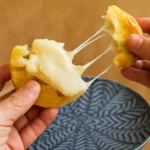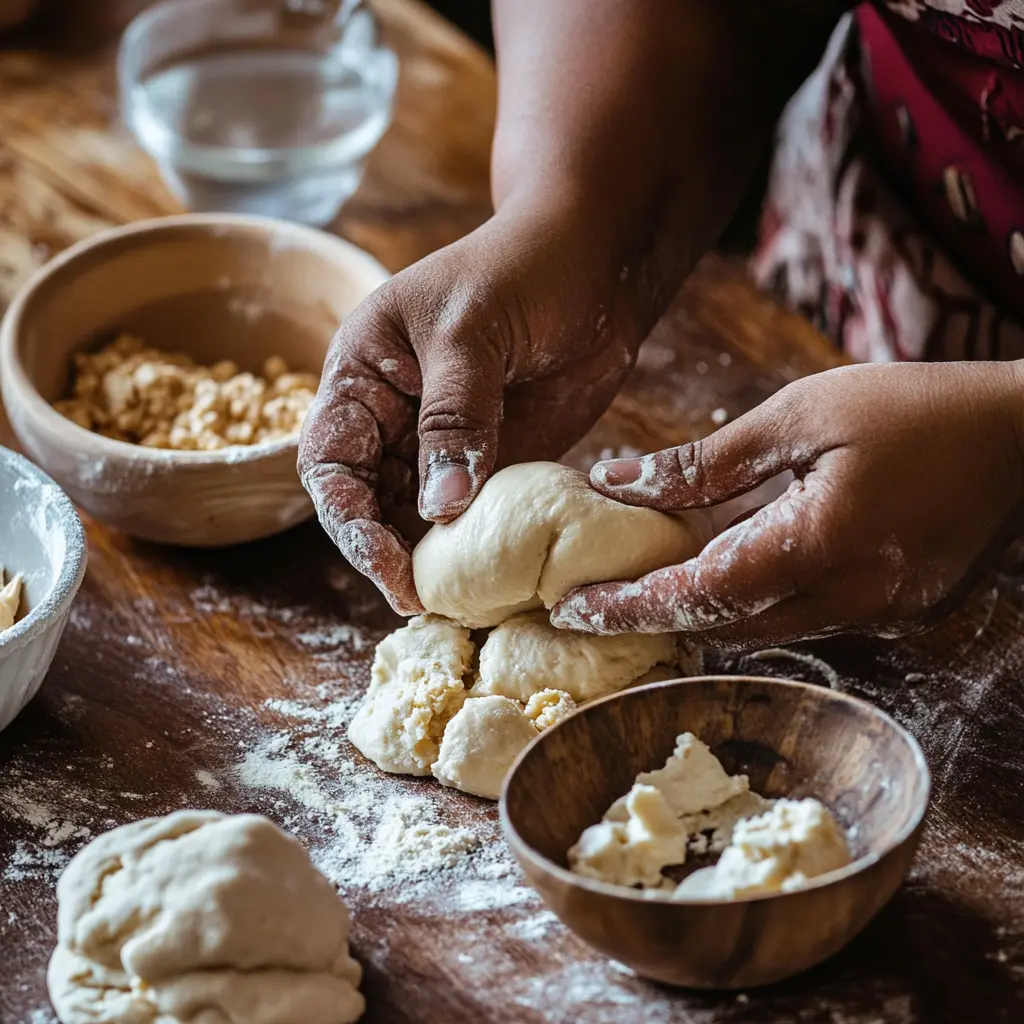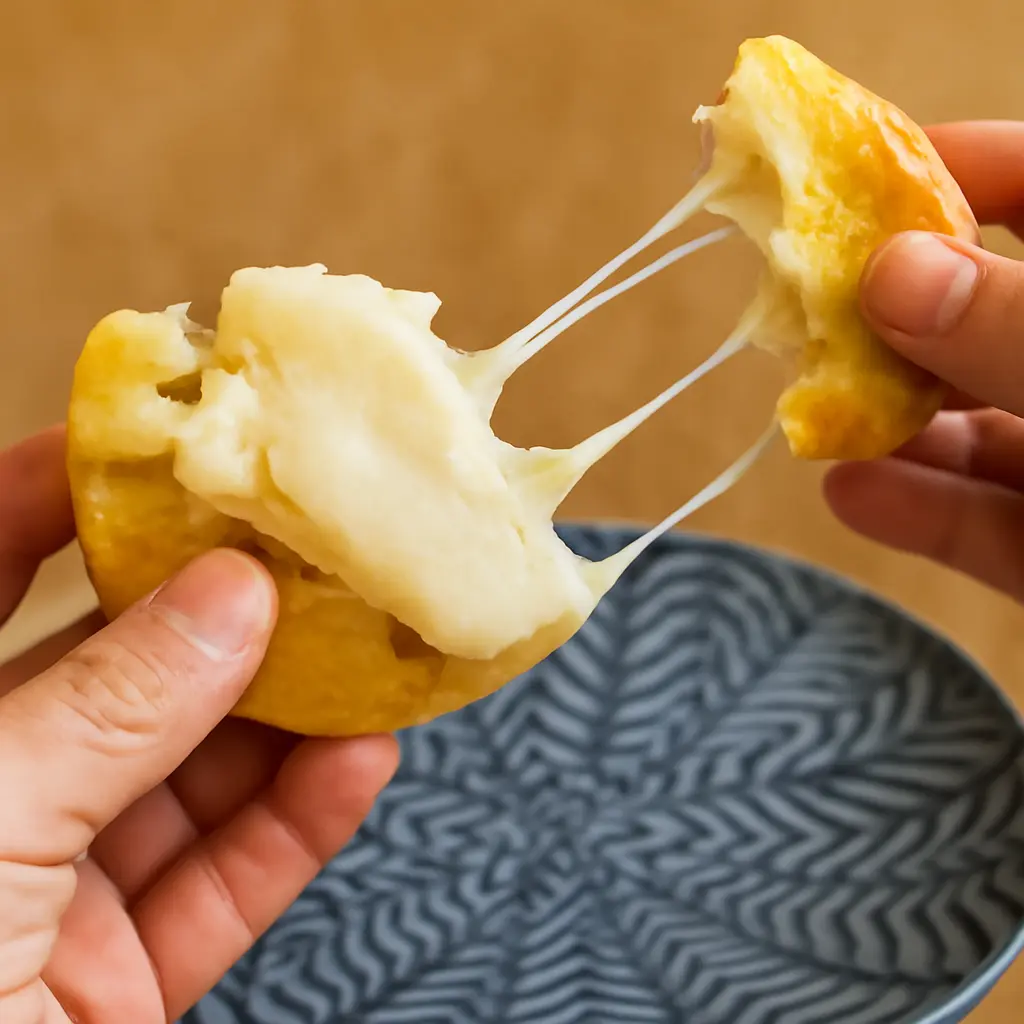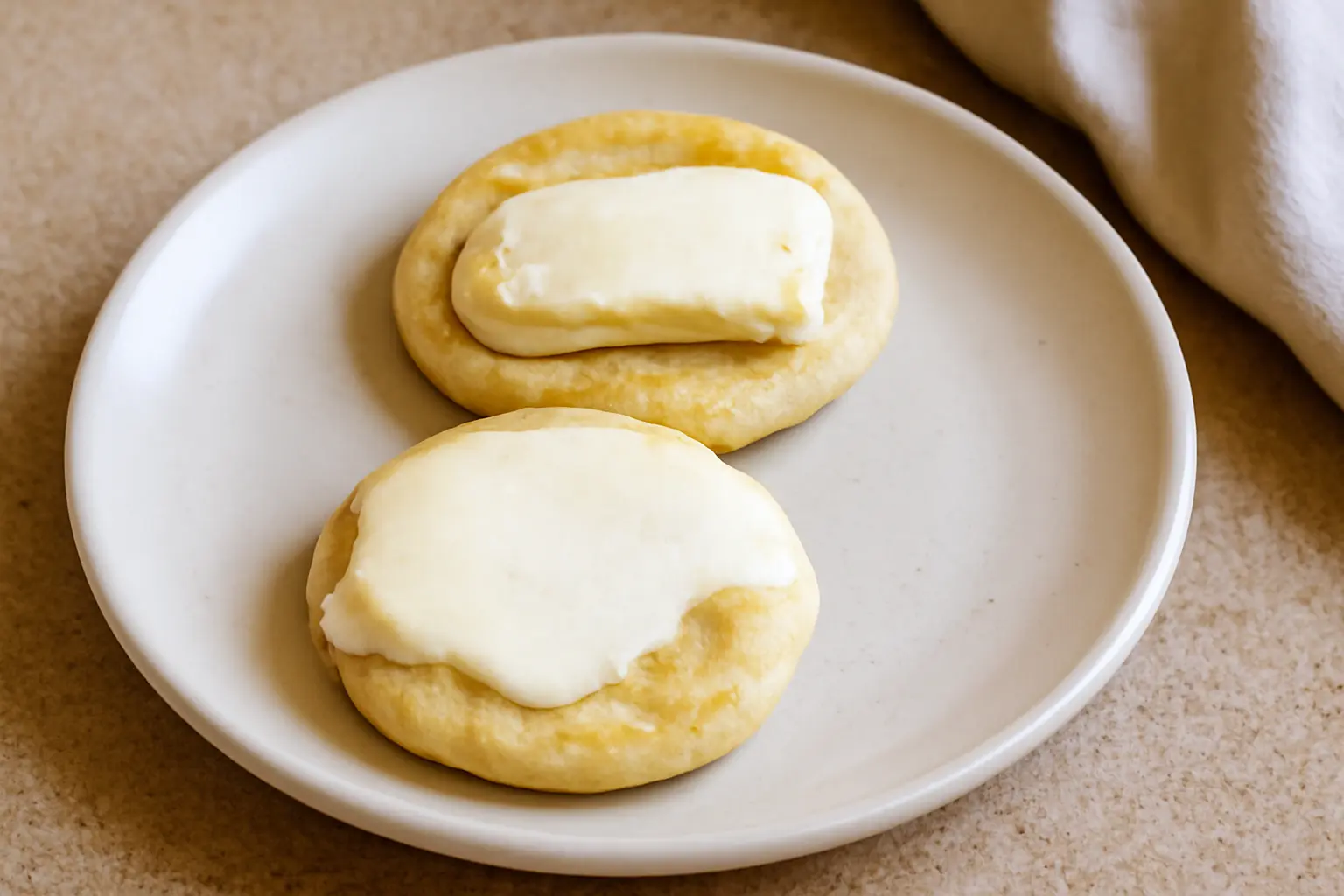There’s something deeply nostalgic about the sound of sizzling cornmeal on a hot skillet. For many, it recalls childhood breakfasts in a Colombian home, laughter echoing through the kitchen, and the warm scent of butter and masa filling the air. If you’ve ever longed for a meal that feels both simple and deeply meaningful, Colombian arepas offer exactly that. They’re more than just corn patties — they’re a vessel of tradition, comfort, and family. Whether you grew up with them or are just now discovering their magic, learning how to make Colombian arepas brings a taste of Colombia right to your table.
What Are Colombian Arepas?
You might be wondering: what makes Colombian arepas so special? At first glance, they may look like any other corn-based flatbread. But their roots run deep in Colombian culture, dating back to pre-Columbian times. Indigenous communities across the region prepared early versions of arepas using ground corn, making it one of the most enduring staples in South American cuisine.
Unlike their Venezuelan cousins — which are typically stuffed — Colombian arepas are often grilled or pan-fried and served with toppings like cheese or eggs. Their texture can vary from soft and pillowy to crispy-edged, depending on the region and personal taste. Every bite carries a bit of history, a touch of home, and the resilience of Colombian identity.
Table of Contents

Colombian Arepas recipe: A Taste of Heritage and Heart
- Total Time: 25 min
Description
Golden Colombian arepas made with masarepa, butter, and oil—crispy on the outside, tender on the inside, and full of comforting flavor.
Ingredients
- 2 cup white masarepa
- 3 cup water
- salt to taste (optional)
- butter for flavor and golden color
- neutral oil for frying (canola or vegetable)
Instructions
-
Make the Dough:
In a large bowl, combine the white masarepa and water. Mix with your hands or a spoon until a soft, smooth dough forms. If the mixture feels too wet or sticky, sprinkle in a little more masarepa. Add salt to taste, if desired. -
Let It Rest:
Allow the dough to rest for 5 to 10 minutes. This gives the masarepa time to absorb the water fully, making the dough easier to shape and enhancing the final texture. -
Shape the Arepas:
Divide the dough into 12 equal portions. Roll each into a ball, then flatten into discs about ½-inch thick and 3–4 inches in diameter—similar to a small pancake. Adjust the size based on how you plan to serve them. -
Heat the Pan:
Warm a skillet or griddle over medium-high heat. Add a bit of oil along with a small pat of butter. This blend creates a golden, crispy crust while keeping the inside soft and moist. -
Cook the Arepas:
Place the dough discs on the hot skillet. Lower the heat to medium-low and cook for about 5 minutes per side. Then increase the heat to high and sear each side for an additional 1–2 minutes to develop a rich, golden color. -
Serve and Enjoy:
Remove the arepas from the pan and serve immediately with toppings like butter, queso fresco, avocado, eggs, or shredded chicken.
To keep warm for later, place them in a low oven (around 200°F) until ready to serve.
Notes
-
Use masarepa, not masa harina — it gives the arepas their signature texture.
-
Resting the dough improves shaping and softens the final result.
-
Add a pinch of salt to enhance the flavor if desired.
-
You can pan-fry, bake, or air-fry arepas depending on your preference.
-
Store leftovers in an airtight container and reheat on a skillet or in the oven.
- Prep Time: 10 mins
- Cook Time: 15 mins
- Category: breakfast
- Cuisine: Colombian
Colombian Arepas Ingredients and Variations
Common Ingredients Used in Colombian Arepas
The beauty of Colombian arepas lies in their simplicity. You don’t need a long list of ingredients to create something delicious. Here’s a breakdown:
Basic Ingredient Table
| Ingredient | Purpose | Substitutes |
|---|---|---|
| Masarepa (precooked cornmeal) | Forms the base dough | None (not interchangeable with cornmeal) |
| Warm Water | Activates the dough and hydrates the flour | — |
| Salt | Enhances the flavor | — |
| Butter or Cheese | Adds richness and flavor | Vegan butter or nutritional yeast |
Masarepa is essential. It’s different from cornmeal or corn flour because it’s precooked, making it easy to work with and creating a smooth, pliable dough.
Regional Variations of Colombian Arepas
Across Colombia, each region puts its own spin on the humble arepa. Here’s what you might come across:
- Arepa de queso – Stuffed or topped with cheese, melty and savory.
- Arepa de huevo – A deep-fried variety filled with a whole egg, especially loved along the Caribbean coast.
- Arepa boyacense – From the Boyacá region, slightly sweet and often baked.
- Arepa antioqueña – Thin and grilled, common in the Antioquia region. Great with butter or white cheese.
Exploring these variations not only diversifies your palate but also deepens your appreciation of Colombian culinary traditions.
Step-by-Step Guide: How to Make Authentic Colombian Arepas
Ready to roll up your sleeves? Making arepas at home is surprisingly easy and doesn’t require special tools.
Tools You’ll Need
- Mixing bowl
- Measuring cup
- Skillet or arepa grill
- Spatula
Instructions
- Mix the Dough:
- In a bowl, combine 2 cups of masarepa with 1.5 cups of warm water and a pinch of salt.
- Mix with your hands until a soft, pliable dough forms.
- Let the dough rest for 5–10 minutes.
- Shape the Arepas:
- Divide the dough into even portions.
- Roll each portion into a ball and flatten into a disc about ½ inch thick.
- Cook the Arepas:
- Heat a skillet over medium heat.
- Cook each arepa for 4–5 minutes per side, until golden and slightly crisp on the outside.
- Optional Add-Ins:
- Fold shredded cheese into the dough before shaping for a cheesy twist.

Pro Tips
- If the dough feels too dry, add a splash of warm water.
- Grease the skillet lightly for a golden crust.
- For extra crispness, bake the arepas in a 350°F oven for 5–10 minutes after pan-frying.
How to Store Colombian Arepas for Freshness and Flavor
Proper storage of your Colombian arepas is key to maintaining their delicious taste and texture. If you plan to enjoy them within a day or two, you can store cooked arepas at room temperature in an airtight container or wrapped tightly in plastic wrap. This helps keep them soft and prevents them from drying out.
For longer storage, it’s best to freeze the arepas. First, let them cool completely after cooking. Then, wrap each arepa individually in plastic wrap or aluminum foil to prevent freezer burn. Place the wrapped arepas in a freezer-safe bag or airtight container, and store them in the freezer for up to 2 months.
When you’re ready to eat, thaw the arepas in the refrigerator or at room temperature for a few hours. Reheat them by grilling, baking, or pan-frying until they are warmed through and have a nice crispy outside. This method revives their original texture and flavor.
Avoid storing arepas in the refrigerator for more than a day, as the cold temperature can make them dry and tough. Freezing is your best bet for preserving the taste and quality over time.
By following these storage tips, you can enjoy fresh-tasting Colombian arepas anytime, even days after cooking!
Serving Suggestions: What to Eat with Colombian Arepas
Now that your arepas are golden and ready, how should you serve them? Here are some delicious ideas:
Traditional Pairings
- Perico (Colombian scrambled eggs with tomato and onion)
- Quesito (Colombian soft cheese)
- Fresh avocado slices
- Butter with a touch of salt
Modern Fusion Ideas
- Use as a base for mini arepa sliders with pulled pork or grilled chicken.
- Top with vegan black bean spread, grilled veggies, and guacamole.
Sauces to Try
- Hogao – Tomato and onion sauce, mild and rich
- Ají – Spicy Colombian salsa with cilantro and chili
- Chimichurri – Herbaceous and tangy, great with meats

The Cultural Importance of Arepas in Colombian Life
You’re not just eating food when you bite into an arepa — you’re partaking in Colombian heritage. Arepas are a daily ritual, a celebration of home, and a dish that brings people together.
Everyday Meals and Celebrations
- Served for breakfast, lunch, or dinner
- Common in school lunch boxes and roadside stands
- Featured during holidays and regional festivals
A Symbol of National Identity
Colombians around the world turn to arepas when they miss home. They’re comfort food, yes, but also a source of pride. Making arepas is often one of the first skills passed down in a Colombian family kitchen.
Arepas Around the World: Colombian Arepas Go Global
As more people discover the richness of Colombian cuisine, arepas have made their way onto international menus.
Colombian Diaspora and Food Trucks
From New York to London, Colombian restaurants and food trucks now serve arepas to a global audience. If you’ve never had one from a Colombian food truck, it’s a must-try experience.
How Colombian Arepas Differ from Venezuelan Versions
Though both countries claim the arepa as their own, there are key differences:
- Colombian arepas: Often grilled, sometimes baked, typically topped rather than stuffed.
- Venezuelan arepas: Usually thicker and filled with ingredients like beef, chicken, or beans.
Understanding these differences helps you appreciate the variety within Latin American cuisines.
We can read also: How to Make Nama Donuts Recipe Like a Japanese Pastry Chef
FAQs About Colombian Arepas
What is the difference between Colombian arepas and Venezuelan arepas?
Colombian arepas are thinner and usually served plain or with cheese.
Venezuelan arepas are thicker and often stuffed with meats, beans, or cheese.
Colombian versions are more of a side dish or breakfast item.
Venezuelan arepas are treated like a main dish or sandwich.
Both use pre-cooked cornmeal but differ in texture and presentation.
Can you make Colombian arepas without masarepa?
Yes, you can make Colombian arepas without masarepa by using fresh corn, corn flour, or even cooked cornmeal (polenta) as alternatives. The texture might vary slightly, but you can still achieve a delicious result. Just blend the corn with water and salt, then form and cook as usual.
Are Colombian arepas gluten-free?
Yes, traditional Colombian arepas are naturally gluten-free because they’re made from 100% cornmeal, usually without any wheat or gluten-containing ingredients. Just be sure to check that the cornmeal or masarepa you use is labeled gluten-free to avoid cross-contamination.
Can you freeze arepas?
Yes, you can freeze arepas! Just cook them first, let them cool completely, then wrap them individually in plastic wrap or foil and place them in an airtight freezer bag. When ready to eat, reheat them by grilling, baking, or pan-frying until warm and crispy. Freezing helps you enjoy fresh arepas anytime!
What toppings work best with Colombian arepas?
Classic toppings for Colombian arepas include fresh butter, shredded cheese (like queso fresco), hogao (a tomato and onion sauce), avocado slices, and sometimes sour cream. You can also add eggs, shredded meats, or beans for a heartier option. These toppings complement the simple, comforting flavor of the arepas perfectly.
Follow us on: Facebook and Pinterest
Conclusion: Make Colombian Arepas a Part of Your Table
By now, you understand that Colombian arepas are more than just food — they’re a story, a tradition, and an experience. Whether you’re reconnecting with your roots or discovering a new favorite comfort dish, arepas invite you into the heart of Colombian culture.
Start by making your first batch at home. Experiment with toppings, share them with loved ones, and let the golden crispness of each arepa remind you that food is one of the most powerful ways to connect.
Call to Action
Ready to try your hand at making Colombian arepas? Share your creation on social media and tag it with #ColombianArepasTradition — join the growing community of food lovers celebrating this iconic dish!

